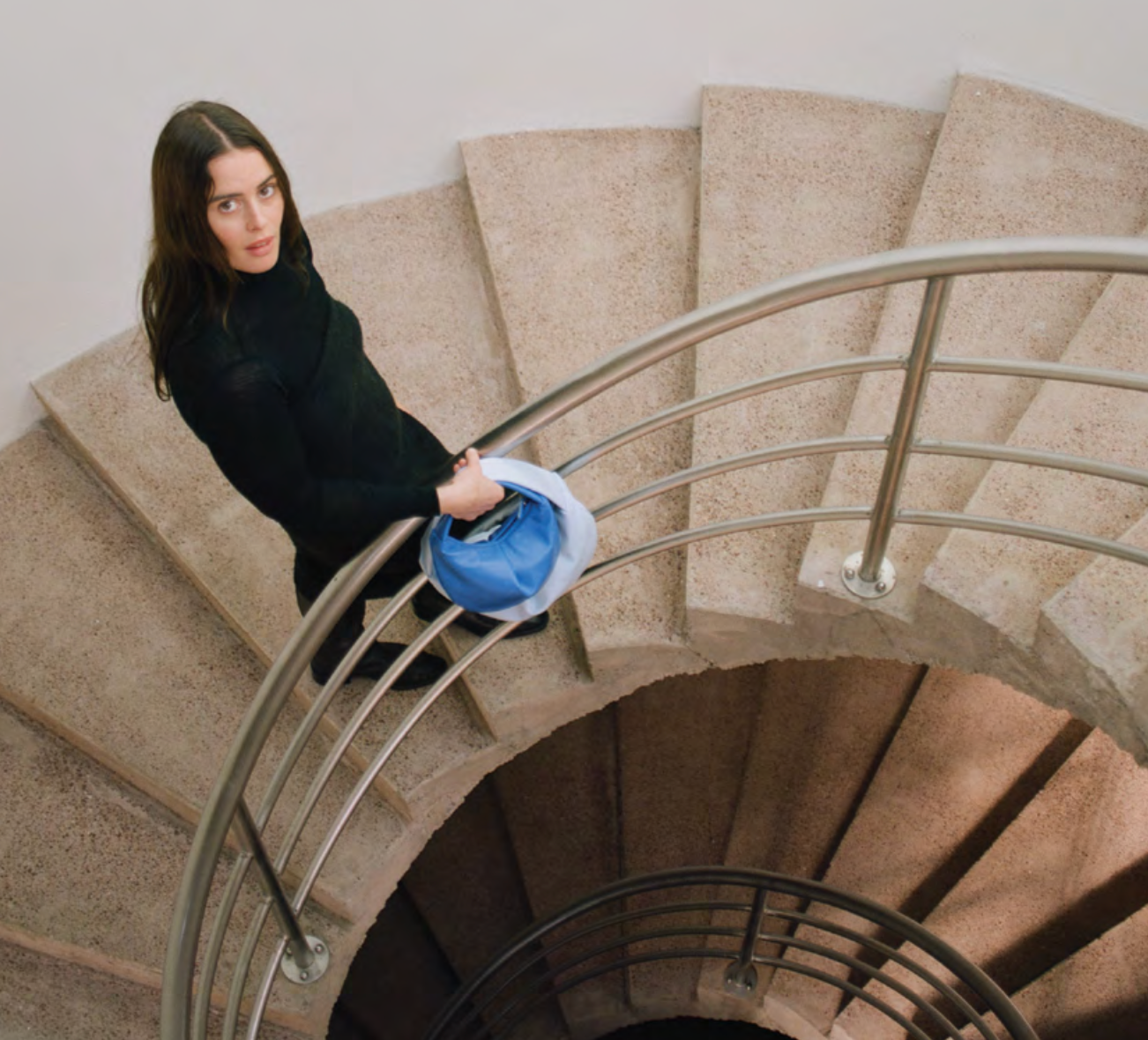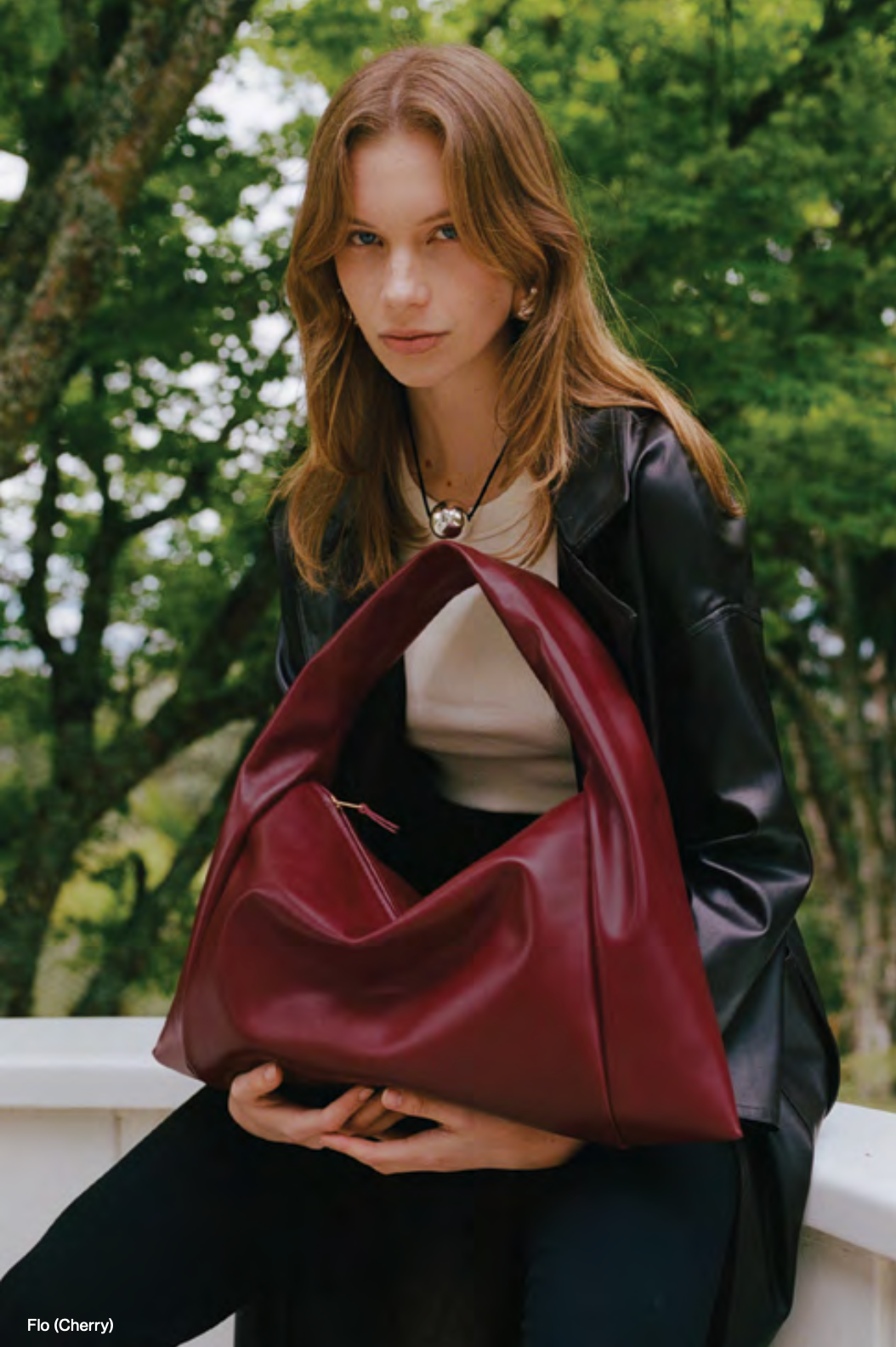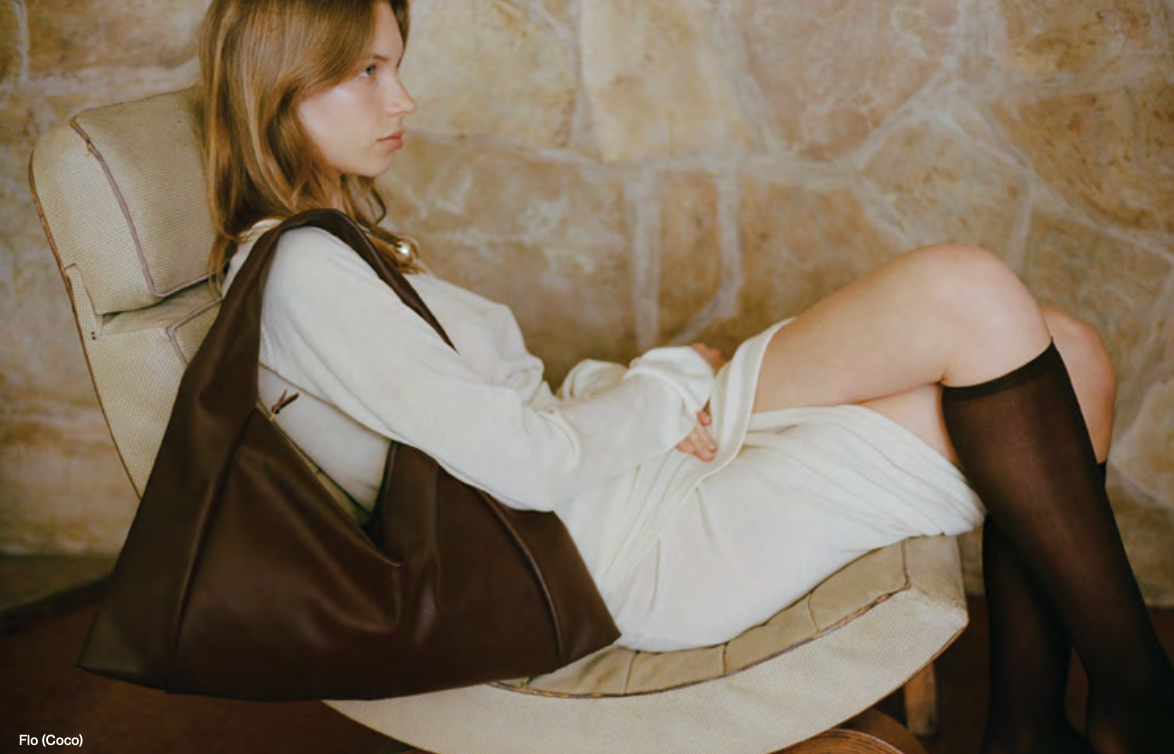
Georgia Jay
Climbing the stairs to handbag heaven
If you don’t recognise the name Georgia Jay, the brand’s distinctive handbags might be more familiar. At a point in time, it was near impossible to frequent an Auckland restaurant or bar without spying one; a soothing pop of pastel leather – maybe baby blue, melon green or sunshine yellow – tucked neatly under an arm or swinging off an elbow.
It was around 2019 when founder and designer Georgia Davison found her first big success in the Ombra, a small square style with a curved handle that tapped into the global trend for itsy bitsy handbags and made a certain demographic in New Zealand’s biggest city swoon.
“We got an agency and they took the Ombra to New York and Paris, then in our first season, we had such huge orders that we didn't possibly know how we were going to keep up,” says the 34-year- old. “It just put us on the map and kind of set us up and it also gave us a really strong sense of direction. We received so much positive feedback from these shapes that we had no idea people wanted to buy. They were these little sculptures that were soft, colourful and extremely functional, but that were very different from what was out there at the time.”
Georgia, who grew up in Whangamata, taught herself how to work with leather in lieu of any formal training in the craft. “There wasn't a school I could go to to learn leather making,” she says. “I did a Bachelor of Design and majored in fashion, but the application was always related to clothing.” Georgia bought her first hide from a travelling fair and whiled away her evenings and weekends learning to manipulate the material.
Georgia launched her accessories label, which takes her first and middle names, in 2015 and her younger sister Ruby, who also studied fashion design, joined the brand soon after. The first styles they made were, as Georgia puts it, “probably a little more Kiwi”, meaning similar to what was popular in the market at the time: pared-back bags made from deer leather with brass hardware and clips, a result of the hides available locally. “I think as we grew as a brand, I trusted myself to be able to step away from that core New Zealand style, which was tough because the local market is quite conservative and they really like what they are used to.”
Georgia began hand-sourcing deadstock designer leather, predominantly from local and Australian suppliers, which meant having access to wider colours, textures and prints, and allowed her to be able to lean into a more vibrant palette and sculptural shapes.
Today, Georgia sources her leather from a family-run supplier in Montebello Vicentino, which is a small village between Milan and Venice in Italy. She and her sister flew over to learn more about the tanning process, which they hadn’t witnessed before. “They actually use New Zealand hides, which get shipped over there, because they are the best quality in the world,” adds Georgia.
“We have a really nice relationship with this company and have helped them to develop certain articles and colours that they then put into their range and then we use their end of line leathers.”
Georgia still has a hand in every bag that the brand sells, which are made in a studio above Gemmell’s on Symonds Street. She is staunch in her commitment to local manufacturing – a rarity within the New Zealand fashion industry and even more so in leather accessories. This means her capacity to make large runs of styles is limited, but also that the company can be nimble with what it produces. “It gets to a point with expansion where the formula for growth is to shift production offshore,” says Georgia. “But then you lose a unique and intimate part of the story as well as relinquish control of the quality of the product and it doesn't feel aligned to compromise these things.”
In-house production also means that Georgia Jay can make to order and limit its own waste, which are key points in a move toward greater sustainability.
“There’s a lot of pressure on brands and there’s a lot of responsibility when it comes to sustainable manufacturing,” says Georgia. “A really big part of it for us is that we can control our waste and that's one of the most sustainable things you can do as a brand.” The business works exclusively in leather, which comes with an environmental cost, but working with natural materials
is at the core, and paired with exquisite detailing and craftsmanship it promotes longevity of each product. “If you can invest in a beautifully designed and crafted leather handbag that will serve you every day for many years, I think that speaks to sustainability.”
Georgia Jay’s best-selling bags today are the Torta, a soft, slouchy envelope shape with a long strap that can be adjusted to wear on the shoulder or crossbody, and the Fortune, a rounded style with a thick shoulder strap and pleat at the centre that resembles the sugary prophetic cookie. “The best seller changes all the time and there is still demand for all of our products, but right now it definitely feels like big bags are the style everyone wants,” adds Georgia. She designed the Flo – which looks like a large hybrid of the Torta and Fortune – to cater to this demand that seems to have sprung from people travelling and going back to work after lockdown and carrying a whole day’s worth of things with them. “We're just constantly looking for ways to improve the product and also recognising global shifts in styles. But it also evolves around our own needs as well. When my sister and I decided to go to Italy to meet our suppliers, we were travelling and needed a different style to suit that,” says Georgia.

“A huge thing for us is that it's got to be comfortable, seamless on the body, it's got to look nice inside and out and it has to be highly functional.”
Like many businesses manufacturing in New Zealand, Georgia’s challenges are trying to find craftspeople in an industry where they are rapidly decreasing, being geographically distant from international suppliers and customers, and standing out in a highly competitive and crowded market. “I think everyone's feeling it in the industry in some ways, whether it's the rise of cost to produce or rising costs of rent and wages. And it’s all happening way faster than you're able to put your prices up, so the margins are getting really tested. And for most people, these last couple of years, that’s been challenging in this economic environment. But with every challenge, external and internal that affects business, there is always an opportunity to listen and adapt to the ever-changing needs of our community.
“At these times we notice more considered purchasing, both in styles and a natural shift to adopting a more neutral palette. That also means our focus is on designing pieces that will take you effortlessly from day to evening, across different mode shifts, in times of more conservative spending. Remaining connected and agile in times of uncertainty is often hugely attributed to success in the long run.”
Which is why she’s happy to go at a slower pace, mostly selling direct from her website to local and international customers, while being selective with wholesale accounts. And creating a brand that can exist within her own values. “If I think about the parts of the business that I really love, it’s about being profitable but also creating a nice place to work, nurturing creativity and really connecting with our customers.”

